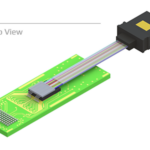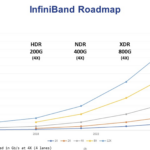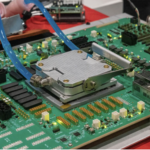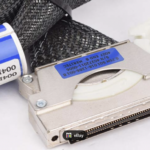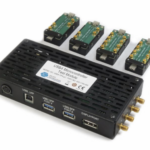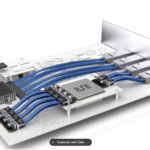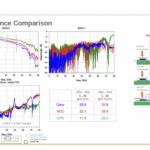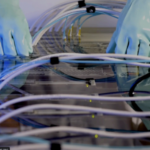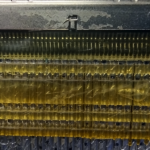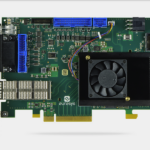Inside-the-box copper connector and cable IO-Link standards for data centers have been a significant focus of systems product development, particularly within consortia and industry standards groups. Some recent examples are internal 400G and 800G PECFF Top-of-Board, Ethernet, CXL, and the PCIe use of SFF TA 1002/1020 connectors. Other examples include twin-axial cables for memory, storage, […]
cables
Pluggable IO interface technology driving 224G PAM4 cable and connector developments
In this article, we’ll discuss the recent 200+G PAM4 per-lane interconnect developments supported by various consortia, standards bodies, and new product announcements. The latest 2023 Ethernet Alliance Roadmap shows the demand for 200+G per-lane pluggable modules, connectors, copper, and optical cable products by 2025. Based on their chart below and the interface roadmap, several different lane-count versions […]
How high pin-count socket connectors are supporting new processor-chip applications
Datacenter server processor chips have proven valuable as pluggable and removable devices for the socket connectors mounted to a server’s main PCB board. However, the number of contacts per socket connector has dramatically risen over the last few years. New chips offer 3000 to 5000 or more contact pads per flip chip. Typically, the socket […]
How the terabit class of pluggable cables and connectors is advancing
The world of gigabits began some 25 years ago, with a progression of interface lanes and links — from 100G and 200G to 400G and then 800G using IO standard and proprietary connectors and cables. Believe it or not, gigabit lanes were first used in 1999. Today, we’re entering the terabit phase with interface links […]
How new USB4.2 80G cable links will support cost-effective connectivity
The USB Promoter Group recently announced the November release of the USB4 Version 2.0 specification, a significant update to enable up to 80 Gbps of data performance over the USB Type-C cable and connector. The USB Type-C and USB Power Delivery (USB PD) specifications will also be updated to enable this higher level of data […]
Will internal IO copper cables for data centers become standardized?
Data-center passive DAC external cables have been standardized and interoperable for decades. However, the mating, inside-the-box cables have yet to be fully standardized. In general, inside-the-box IO interface interconnections have been a competitive value point for those OEMs and suppliers that offer quality options. Providing reliable connectors and twin-axial cables configured in an ideal layout […]
New developments in 212+G per-lane data-center connectors and cables
Several deep-packet inspection chips and test instrumentation applications are using next-generation speed-rate IO application-specific integrated circuit (ASIC) chips. These chips combine several circuits in one and are customized for a particular use. This is different than what the current server and switch markets are typically using. These developers are experienced with the 200+ per lane […]
Driving standards: The latest liquid-cooling cables and connectors for data centers
Passive and active direct liquid cooling for modules and chassis immersion implementations are becoming more commonly used to cool high-wattage devices — such as graphics processing units (GPUs) and switch application-specific integrated circuits (ASICs). This seems to be driving an expanding fluid connector and cable market with higher-volume units as applications now include hyperscaler and […]
Wire and fiber optic geometries offer high-speed cable transmission options
The latest high-speed transmission cables are benefitting from the use of optic-fiber and copper wire options, which are offering unique form factors and customizable solutions. Typically, data-transmission copper wire and optical-fiber conductors are round or cylindrical. The addition of silver plating on the copper conductor facilitates the high-frequency electrical transmission path. Fiber conductors are foundry […]
How the digital-interface standards for cables and connectors are changing
CoaXPress (CXP) is a popular, digital-interface standard developed for high-speed transmission of data, videos, and still images. This interface was introduced in 2008 and has been used in industrial automation for years, with advanced machine vision and robotics applications following suit. It has been driven by reliability and simplicity, which includes its cables and connectors. […]

